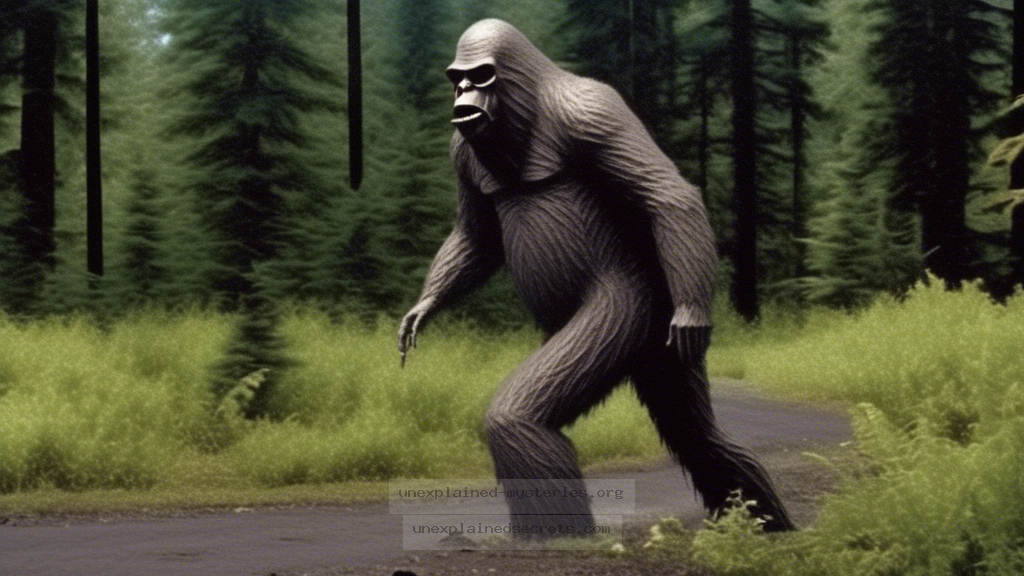What Is the Truth Behind the Patterson-Gimlin Film, and Does It Provide Definitive Evidence of Bigfoot?
What Is the Truth Behind the Patterson-Gimlin Film, and Does It Provide Definitive Evidence of Bigfoot?
The Patterson-Gimlin film, shot in 1967, has long been a cornerstone in the study of Bigfoot and cryptozoology. For decades, enthusiasts and skeptics alike have debated the authenticity of this 16mm footage, which allegedly depicts a female Sasquatch walking through the woods of Bluff Creek, California. This film has not only sparked the imagination of many but has also raised critical questions about the existence of Bigfoot. What makes this film so compelling, and does it truly provide definitive evidence of this elusive creature? In this blog post, we will delve into the historical context, core theories, and ongoing debates surrounding the Patterson-Gimlin film, offering a comprehensive look at its significance in the search for Bigfoot.
Historical Context of the Patterson-Gimlin Film
The Patterson-Gimlin film emerged during a time when interest in cryptozoology was beginning to gain traction. In the 1960s, reports of Bigfoot sightings were relatively common, particularly in the Pacific Northwest. Roger Patterson and Bob Gimlin set out on October 20, 1967, to film a documentary about Bigfoot after hearing accounts from locals. Their journey led them to Bluff Creek, where they claimed to have encountered the creature. The footage they captured has since become a pivotal piece of evidence in the ongoing debate about Bigfoot’s existence.
Several factors made this film particularly intriguing. The era’s limited technology meant that the film’s quality, while grainy, had a certain authenticity that many believe could not be easily faked at the time. Moreover, the physical characteristics of the creature captured in the film—its gait, muscular build, and apparent lack of human-like features—have led some experts to argue that it could not have been a man in a costume.
Decoding the Footage: What Do We See?
The Patterson-Gimlin film lasts approximately 59 seconds and features a large, bipedal figure moving gracefully through a clearing. Various aspects of the footage have been scrutinized, such as the creature’s stride, arm length, and overall anatomy. Many proponents of the film argue that the subject’s gait is unlike that of a human, as it exhibits a unique swinging motion that suggests a different skeletal structure.
Critical analysis of the film has yielded several interesting observations:
- Gait Analysis: The creature’s long strides and relaxed posture have led some analysts to conclude that its biomechanics differ from those of a human.
- Muscle Definition: Close examination of the film reveals muscle movement and articulation that some believe would be difficult to replicate in a costume.
- Facial Features: Skeptics often point to the lack of clear facial features, arguing that a mask would have been more discernible.
The Science of Hoaxing: Can It Be Duplicated?
One of the main arguments against the authenticity of the Patterson-Gimlin film is the possibility of it being a hoax. Skeptics have proposed various theories suggesting that the film might have been staged. In 2004, filmmaker and Bigfoot researcher Greg Long published a book titled “The Making of Bigfoot,” in which he presents evidence that the film was indeed a fabrication.
Key points from the hoax theory include:
- Costume Quality: Critics argue that someone could have easily crafted a realistic-looking costume using materials available at that time.
- Personal Motives: Both Patterson and Gimlin were reportedly facing financial difficulties, raising suspicions about their motives for staging such an event.
- Inconsistencies in Accounts: Some of their testimonies have been questioned, with skeptics suggesting that the story changed over time.
Scientific Investigations and Analyses
Several scientific investigations have been conducted to analyze the Patterson-Gimlin film. Notable figures in the field, such as Dr. Jeff Meldrum, a professor of anatomy and anthropology, have expressed interest in the film’s content. Meldrum has conducted extensive studies on Sasquatch footprints and has argued that the anatomical features displayed in the film support the existence of a large, unknown primate.
Other scientists have taken a more skeptical approach, emphasizing the need for empirical evidence beyond the film. They argue that without physical specimens or more substantial evidence, the film alone cannot be considered definitive proof of Bigfoot.
Practical Implications of the Film’s Findings
The Patterson-Gimlin film has significant implications for both the scientific community and the field of cryptozoology. For researchers, it raises questions about what constitutes credible evidence and encourages a more rigorous approach to the investigation of unknown species. The film also highlights the need for collaboration between scientists and enthusiasts in the pursuit of understanding cryptids like Bigfoot.
Moreover, the film has a profound impact on popular culture, influencing movies, documentaries, and public perceptions of Sasquatch. This cultural phenomenon has led to increased interest in remote wilderness areas, with many people embarking on expeditions to find evidence of the creature.
Alternative Perspectives: The Cultural Significance of Bigfoot
Beyond the scientific debate, the Patterson-Gimlin film holds cultural significance, representing humanity’s fascination with the unknown. Bigfoot serves as a metaphor for the primal connection between humans and nature, tapping into deep-seated fears and curiosities about what might exist beyond our understanding. Indigenous cultures in North America have long held beliefs in similar creatures, further enriching the narrative surrounding Bigfoot.
Proponents of Bigfoot research often argue that the creature symbolizes the importance of environmental conservation, as many reported sightings occur in pristine wilderness areas. By exploring these connections, we can better appreciate the broader implications of the Patterson-Gimlin film in cultural and ecological contexts.
Common Misconceptions About Bigfoot and the Film
Despite the extensive discourse surrounding the Patterson-Gimlin film, several misconceptions persist. Here are some common myths:
- All Bigfoot Sightings Are Hoaxes: While some reports may be fabricated, many individuals have claimed genuine encounters, contributing to the ongoing intrigue.
- The Film Is Irrefutable Evidence: While it serves as a captivating piece of evidence, it should be viewed within the context of broader scientific inquiry.
- Bigfoot Is a Myth: Dismissing Bigfoot entirely overlooks the possibility of undiscovered species and the rich tapestry of folklore surrounding similar creatures worldwide.
Best Practices for Investigating Bigfoot
For those interested in investigating the existence of Bigfoot, several best practices can enhance the search:
- Document Findings: Always maintain detailed records of sightings, including location, time, and environmental conditions.
- Engage with Experts: Collaborate with biologists, anthropologists, and other specialists to gain valuable insights and guidance.
- Respect Nature: Ensure that investigations do not disturb wildlife or ecosystems, promoting conservation efforts.
- Utilize Technology: Employ tools like trail cameras, audio recorders, and drones to aid in gathering evidence.
Future Developments and Ongoing Research
The quest to understand Bigfoot continues, with ongoing research efforts dedicated to uncovering the truth behind the Patterson-Gimlin film. As technology advances, new methods of analysis may help resolve lingering questions. Genetic testing has become a focal point in the search for evidence, with some researchers advocating for the collection of environmental DNA (eDNA) from regions known for Bigfoot sightings.
Furthermore, social media and online platforms have facilitated collaboration among enthusiasts and researchers, leading to the sharing of sightings, evidence, and theories. As the digital age progresses, the dialogue surrounding Bigfoot may evolve, potentially leading to new discoveries.
Conclusion: The Enigma of the Patterson-Gimlin Film
The Patterson-Gimlin film remains one of the most debated pieces of evidence in the realm of cryptozoology. While it has captured the imagination of countless individuals, the question of whether it provides definitive proof of Bigfoot’s existence remains unresolved. Through historical context, scientific investigations, and cultural implications, we gain a deeper understanding of the film’s significance. The pursuit of truth in the world of cryptozoology is complex, and as we explore the mystery of Bigfoot, we are reminded of the enduring allure of the unknown.
Other Articles
Recent Posts
- What Happened to Flight MH370? The Conspiracy Theories That Still Haunt Us
- What Secrets Lurk Within the Walls of the Infamous Trans-Allegheny Lunatic Asylum?
- What Evidence Supports the Existence of Bigfoot in the Pacific Northwest?
- What Happened to the Indus Valley Civilization? Unraveling the Mysteries of Ancient Urban Life
- Can Telepathy Be Scientifically Proven Through Laboratory Evidence?







